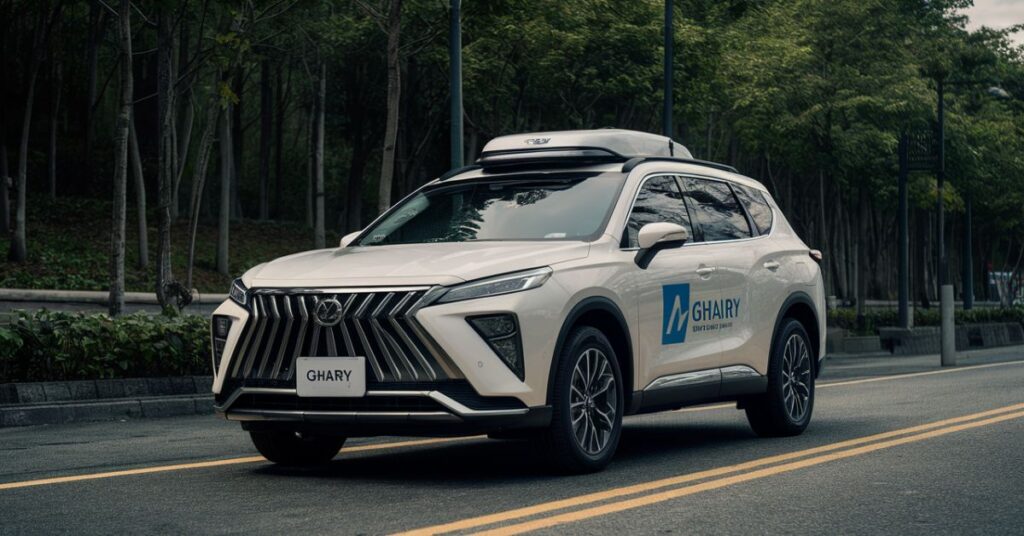
Introducing Taiwan’s groundbreaking self-driving gharry service, revolutionizing transportation with its convenient booking system and unwavering commitment to safety. Offering a seamless blend of tradition and innovation, this initiative promises travelers a unique and secure journey through Taiwan’s enchanting landscapes.
What is Taiwan self-driving gharry?
Taiwan’s self-driving gharry is an innovative transportation service that has been gaining popularity in the bustling streets of Taipei. These autonomous vehicles, also known as driverless taxis or robo-taxis, are designed to provide a safe, convenient, and eco-friendly mode of transportation for residents and visitors alike.
The self-driving gharry project is a collaborative effort between Taiwan’s government, technology companies, and research institutions. It aims to revolutionize urban mobility by offering a seamless and efficient transportation solution that reduces traffic congestion and carbon emissions.
How Taiwan self-driving gharry Works?
The self-driving gharrys in Taiwan are equipped with advanced sensors, cameras, and software that enable them to navigate the city’s roads without human intervention. These vehicles rely on a combination of GPS, lidar (light detection and ranging), and machine learning algorithms to detect obstacles, read traffic signals, and plan the most efficient routes.

To use the service, passengers simply need to book a ride through a mobile app or a designated pickup location. Once the self-driving gharry arrives, they can enter the vehicle and input their destination. The autonomous system will then take over and navigate the vehicle to the desired location, providing a smooth and comfortable ride.
Women’s Participation in Technology and Their Role in the Gharry Project
One of the notable aspects of Taiwan’s self-driving gharry project is the significant involvement of women in the technology and engineering sectors. Many talented female engineers, researchers, and technicians have played crucial roles in the development and implementation of this cutting-edge transportation system.
The participation of women in the self-driving gharry project not only promotes gender diversity in the technology industry but also brings valuable perspectives and insights to the table. Their contributions have been instrumental in ensuring that the self-driving vehicles are designed with safety, accessibility, and user-friendliness in mind.
Read This blog: How I Sleep at Night Knowing l’m Failing all My Cl – Tymoff
Booking a Self-Driving Gharry in Taiwan: How to Reserve Online

Booking a self-driving gharry in Taiwan is a straightforward process, thanks to the user-friendly mobile application and online booking platform. Here’s how it works:
- Download the App: Users can download the official self-driving gharry app from the App Store or Google Play Store.
- Create an Account: Users will need to create an account by providing their personal information and payment details.
- Set Pickup Location: Users can either input their current location or select a designated pickup point on the map.
- Enter Destination: Users will need to enter their desired destination address or select it from the map.
- Choose Vehicle Type: The app will provide options for different vehicle types, such as sedans, SUVs, or vans, based on the number of passengers and luggage requirements.
- Confirm and Pay: After reviewing the details and fare estimate, users can confirm the booking and make the payment through the app’s secure payment gateway.
- Track and Ride: Users can track the self-driving gharry’s progress on the app and receive notifications when the vehicle arrives at the pickup location.
Advantages of Using Self-Driving Gharrys in Taipei
The introduction of self-driving gharrys in Taipei offers several advantages for both residents and visitors:
- Convenience: Self-driving gharrys eliminate the need to navigate through traffic or find parking spots, providing a hassle-free transportation experience.
- Safety: With advanced sensors and algorithms, self-driving gharrys are designed to minimize the risk of accidents caused by human error, ensuring a safer ride for passengers.
- Accessibility: The self-driving gharry service caters to individuals with mobility challenges, providing a reliable and accessible mode of transportation.
- Environmental Friendly: By reducing the number of privately owned vehicles on the road, self-driving gharrys contribute to lower carbon emissions and a more sustainable urban environment.
- Cost-effective: With no need for a human driver, self-driving gharrys can potentially offer more affordable fares compared to traditional taxi services. If you’re considering purchasing one of these vehicles, you can get a loan from a money lender to help finance your purchase.
Safety Features of Self-Driving Gharrys in Taiwan

Safety is a top priority for the self-driving gharry project in Taiwan. These autonomous vehicles are equipped with a range of advanced safety features to ensure the well-being of passengers and other road users:
- Redundant Sensor Systems: Multiple sensors, including lidar, radar, and cameras, work in tandem to provide a comprehensive view of the vehicle’s surroundings, minimizing blind spots and ensuring accurate detection of obstacles and hazards.
- Automatic Emergency Braking: The self-driving gharrys are programmed to automatically apply the brakes in case of imminent collisions or unexpected obstacles, reducing the risk of accidents.
- Cybersecurity Measures: Robust cybersecurity protocols are in place to protect the vehicles’ systems from potential hacking attempts or cyber threats.
- Remote Monitoring: The self-driving gharrys are monitored remotely by a team of experts who can take control of the vehicle if necessary, ensuring an additional layer of safety.
- Fallback Systems: In the event of a system failure or unexpected situation, the self-driving gharrys are equipped with fallback systems that can safely bring the vehicle to a stop.
Also Read This Blog: How to Cancel Chuze Fitness Membership?
Public Feedback on Self-Driving Gharrys in Taipei
The introduction of self-driving gharrys in Taipei has garnered a range of reactions from the public. While some have embraced the innovative technology with enthusiasm, others have expressed concerns and reservations:
- Positive Feedback: Many residents and visitors have praised the convenience, safety, and eco-friendliness of the self-driving gharry service, appreciating the seamless and stress-free transportation experience it provides.
- Concerns about Job Displacement: Some taxi drivers and transportation industry workers have voiced concerns about potential job displacement due to the widespread adoption of self-driving vehicles.
- Trust and Acceptance Issues: A portion of the public remains skeptical about the reliability and safety of autonomous vehicles, citing concerns about technology failures or cyber threats.
- Accessibility and Affordability: While the self-driving gharry service aims to be accessible and affordable, some individuals have raised questions about the availability of the service in certain areas and the potential cost implications for lower-income communities.
- Privacy and Data Security: There are ongoing discussions about the privacy implications of self-driving gharrys and the need for robust data protection measures to safeguard passengers’ personal information.
Frequently Asked Questions (FAQs)
How does the self-driving gharry navigate through traffic and avoid obstacles?
The self-driving gharry relies on a combination of advanced sensors, such as lidar, radar, and cameras, as well as machine learning algorithms to detect obstacles, read traffic signals, and plan the most efficient routes. These systems work together to navigate the vehicle safely through traffic and avoid collisions.
Is there a human operator monitoring the self-driving gharrys?
While the self-driving gharrys are designed to operate autonomously, they are monitored remotely by a team of experts who can take control of the vehicle if necessary. Additionally, the vehicles are equipped with fallback systems that can safely bring the vehicle to a stop in case of any system failure or unexpected situation.
How do I book a self-driving gharry in Taipei?
To book a self-driving gharry in Taipei, you can download the official mobile app or access the online booking platform. After creating an account and providing your pickup location and destination, you can select the desired vehicle type and proceed with the booking and payment process.
Are self-driving gharrys accessible for individuals with disabilities?
Yes, the self-driving gharry service in Taiwan is designed to be accessible for individuals with disabilities or mobility challenges. The vehicles are equipped with features such as wheelchair ramps and ample interior space to accommodate passengers with special needs.
How are the self-driving gharrys maintained and serviced?
The self-driving gharrys undergo regular maintenance and servicing to ensure optimal performance and safety. This includes software updates, sensor calibration, and physical inspections by trained technicians. The vehicles are also equipped with remote monitoring systems that can detect potential issues and schedule necessary repairs or maintenance.
Conclusion – The Future of Urban Mobility in Taiwan
The self-driving gharry project in Taiwan represents a significant step towards the future of urban mobility. By embracing cutting-edge technology and prioritizing safety, convenience, and sustainability, this innovative transportation service has the potential to transform the way people navigate and experience the vibrant city of Taipei.
As the self-driving gharry service continues to evolve and expand, it will be essential to address public concerns, ensure accessibility and affordability, and maintain a strong focus on data privacy and cybersecurity. By doing so, Taiwan can pave the way for a seamless integration of autonomous vehicles into the urban landscape, reducing traffic congestion, and promoting a more eco-friendly and efficient transportation system.



